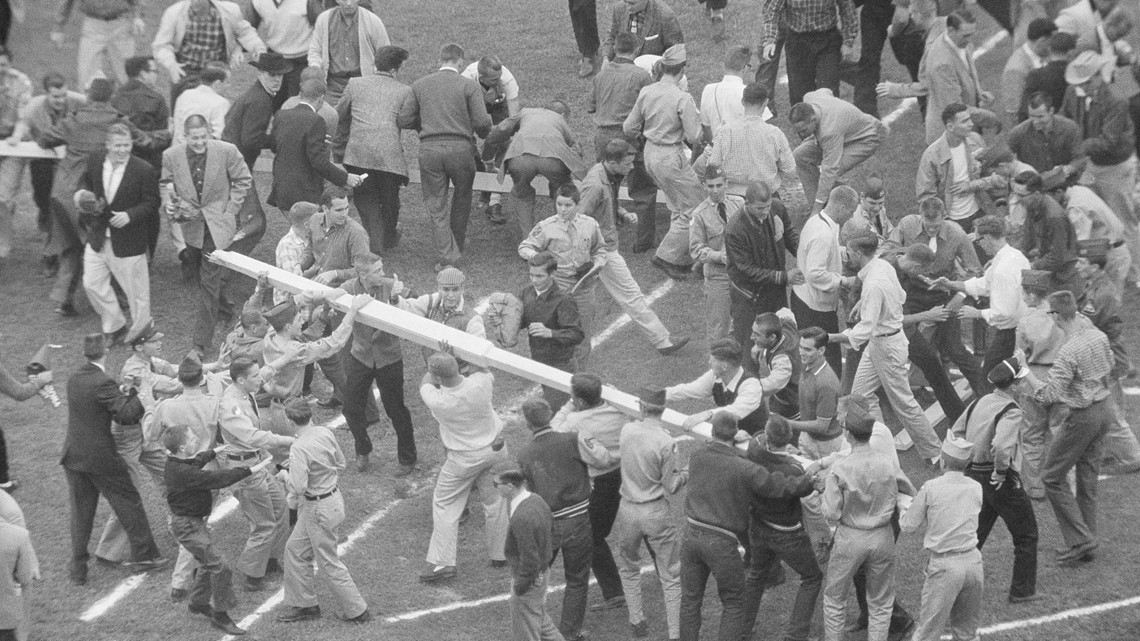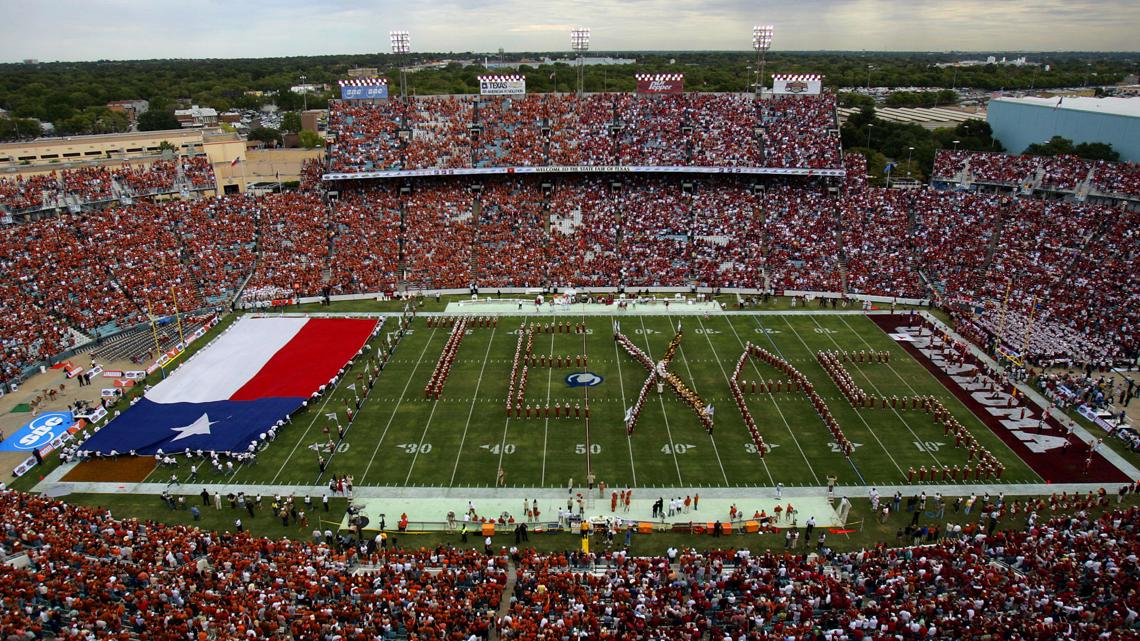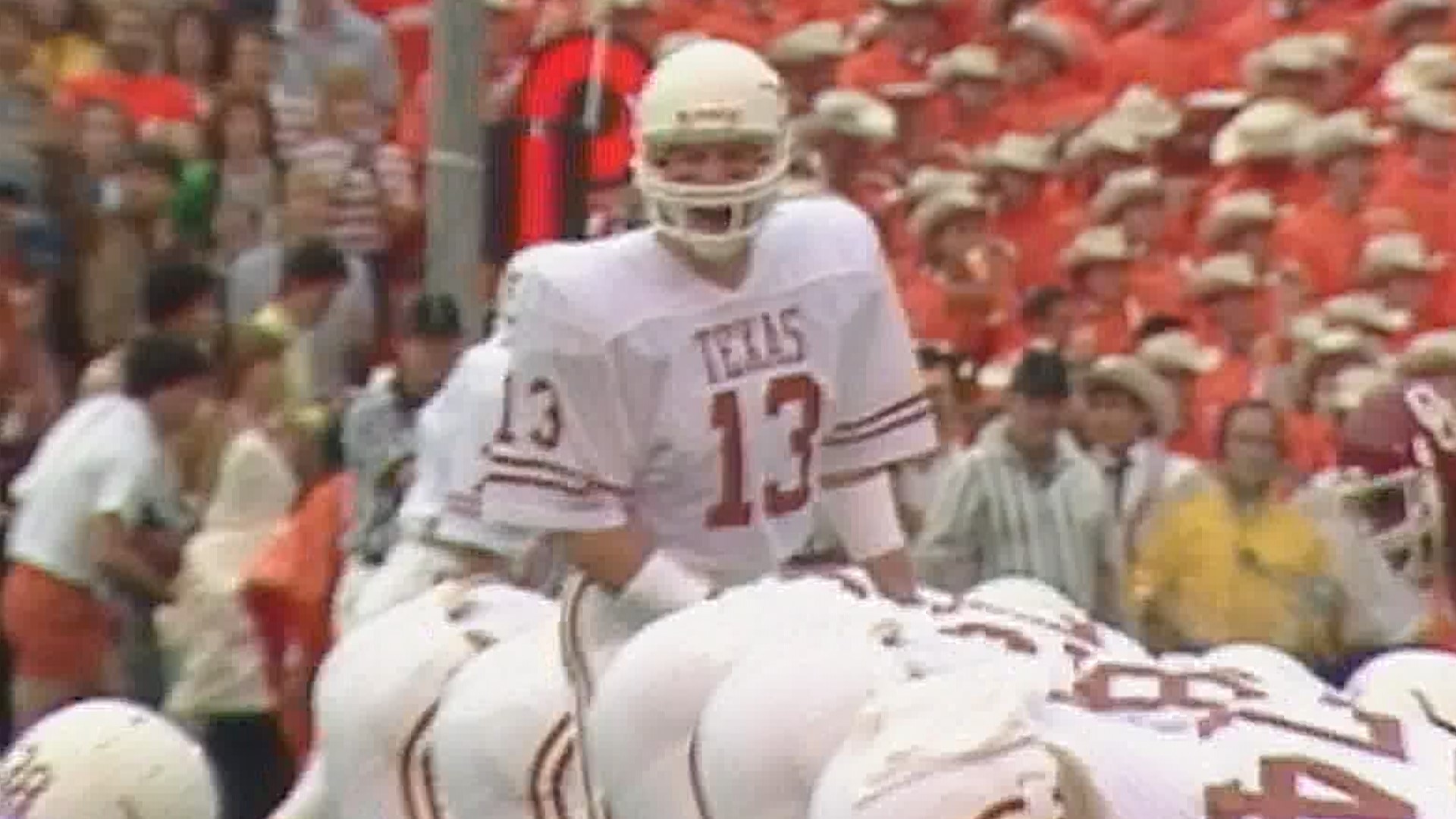DALLAS — The Big 12 is losing its marquee matchup when the Red River Rivalry is played Saturday for the final time under the league’s umbrella.
No. 3 Texas and No. 12 Oklahoma head to the Southeastern Conference in 2024, the same year the Big 12 expands to 16 schools in what the league hopes will be an exciting launch of a new era. But gone will be its most hyped regular-season game, along with the Sooners' annual Bedlam meeting with Oklahoma State in a league with no other rivalries on par with those two.
“The spotlight of college football” is on this game, said Texas coach Steve Sarkisian, who also had stops in the Pac-12 and in the SEC. He calls Texas-Oklahoma at the Cotton Bowl in Dallas “the best setting in college football" with the howling fans split between orange and crimson.
The storied series dates to 1900 and it will belong to the SEC soon enough. It's one that the Big 12 shouldn't rush to replace, said Vassilis Dalakas, a sports marketing researcher at San Diego State who specializes in rivalries.
For starters, big rivalries tend to be born out of proximity. Like other conferences being spread out under the latest wave of realignment, the Big 12 now spans three time zones. Proximity is more of a challenge.


"It’s a lot easier to sell the heat and passion of the rivalry when the two rival teams are nearby," Dalakas said. The landscape starting in 2024 "is a weird situation in college sports in general. And I think it does makes sense to just figure it out first, see how things settle in the new reality.”
Rivalries also thrive through longstanding traditions, bad blood, title implications and back-and-forth, nail-biting outcomes. TV viewership pushes interest well beyond state borders.
The Longhorns and Sooners check most of those boxes. Every October, they play before more than 92,000 fans in Dallas about three hours from their respective campuses. Except for last year's 49-0 win by Texas, the series was decided by eight points or less in the eight Red River meetings before that.


From a fan and team perspective, Dalakas believes the Red River Rivalry should retain its intensity once the teams head to the SEC.
To the Big 12, though, “that is a big hit. That is a big loss,” he said.
“Obviously, part of it is simply losing two marquee programs. But the fact that those two programs had a rivalry with each other added even more of an element of excitement, especially from a branding and marketing standpoint that at least in the short run will be hard to replace or replicate with some other clubs,” Dalakas said.
The Big 12 is of course still promoting the game involving the league's only two ranked teams on X, formerly Twitter. Both are unbeaten heading into Red River for the first time since 2011.
New rivalries could emerge for the Big 12 starting next season when it welcomes Arizona, Arizona State, Colorado and Utah, joining four newcomers from this year: BYU, Cincinnati, Houston and UCF.
Arizona and Arizona State have played every season since 1946. The winner of the Duel in the Desert is awarded the Territorial Cup. But only three meetings since 2000 have involved a ranked team. Then there’s the Holy War between Big 12 newcomer BYU and 2024 entrant Utah, which have met in 20 of the past 23 seasons.
“That might be an opportunity for the conference to try to market an existing rivalry,” Dalakas said. “Trying to manufacture a rivalry usually doesn’t work. Fans can see through that very easily. If the conference is trying to do something like that, my guess is it will fail pretty bad.”
The immediate chance of a brand boost also could come from Colorado, which rejoins the Big 12 next year from the Pac 12.
Under first-year coach Deion Sanders, Colorado won its first three games, vaulted into the AP Top 25 and attracted ESPN and Fox pregame broadcast teams to campus before cooling off with losses to No. 8 Oregon and No. 9 Southern California. Over its first four games, Colorado had the highest college football TV viewership twice and was second twice across all networks, according to Sports Media Watch.
The Buffaloes have ties with four current Big 12 teams who were members of the old Big Eight that dissolved in 1996 — Iowa State, Kansas, Kansas State and Oklahoma State. But Colorado hasn’t played any of those teams since 2016.
Having Colorado back in the league “might not create a rivalry, but it might create enough interest that can help drive viewership to the conference games," Dalakas said. "And I do think they add a lot of value and excitement. There is something here to be gained even if it doesn’t involve a rivalry.”
More Texas headlines:

